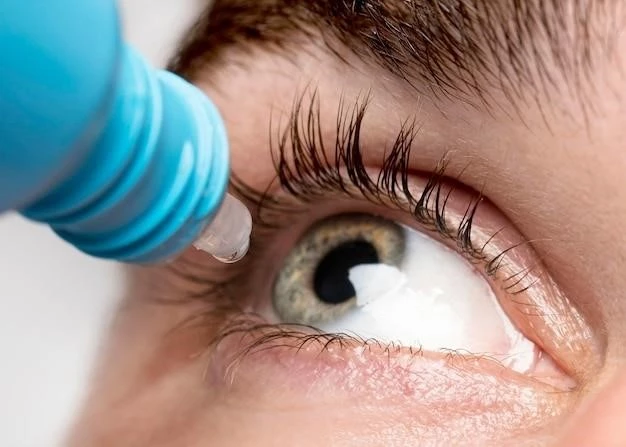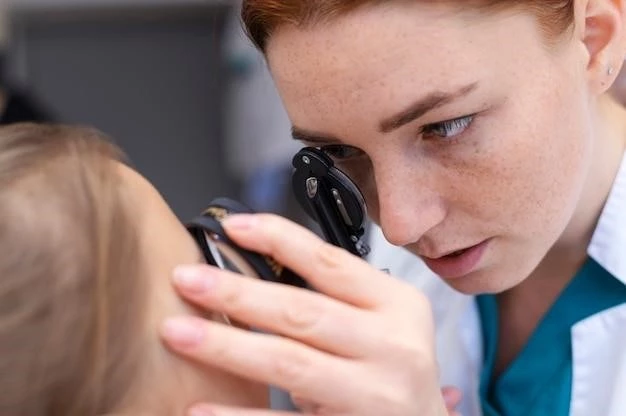Causes of Anophthalmos
Anophthalmos can be caused by genetic factors or environmental influences․
Genetic factors leading to Anophthalmos
Genetic mutations, chromosomal abnormalities, and hereditary conditions can contribute to the development of Anophthalmos․ Specific genes involved in eye development may be affected, disrupting the normal formation of the eyes during embryonic growth․
Environmental causes of Anophthalmos
Exposure to certain substances or toxins during pregnancy, such as chemicals, drugs, or radiation, may lead to Anophthalmos in developing fetuses․ Maternal infections or inadequate prenatal care can also be environmental factors linked to the condition․

Treatment options for Anophthalmos
Treatment options include prosthetic eyes and surgical interventions for functional and aesthetic improvements․
Prosthetic eye options
Prosthetic eyes, also known as ocular prosthesis, are custom-made artificial eyes that mimic the appearance of a natural eye․ They can improve the aesthetic appearance of the eye socket, enhance self-esteem, and provide a sense of normalcy for individuals with Anophthalmos․
Surgical interventions for functional and aesthetic improvements
Surgical procedures such as orbital implant placement and socket reconstruction can help restore volume to the eye socket, improve eye movement, and enhance facial symmetry․ These interventions aim to optimize both the function and appearance of the eye area in individuals with Anophthalmos․
Anophthalmos surgery procedures
Surgery procedures involve orbital implant placement and socket reconstruction methods․
Orbital implant placement techniques
During orbital implant placement, a biocompatible material is inserted into the eye socket to provide support for a prosthetic eye․ Techniques include dermis fat grafts, hydroxyapatite spheres, and porous polyethylene implants to create a stable and natural-looking foundation․
Socket reconstruction methods
Socket reconstruction techniques involve procedures to reshape and adjust the eye socket after enucleation․ This may include tissue grafts, orbital expanders, and dermal matrices to enhance socket depth, contour, and support for prosthetic eye placement, aiming to restore facial harmony and improve prosthesis retention․
Anophthalmos in children
In pediatric patients, diagnosis, management, and developmental considerations are crucial aspects of Anophthalmos care․
Diagnosis and management in pediatric patients
Diagnosing Anophthalmos in children involves thorough clinical evaluation, imaging studies, and genetic testing․ Management strategies may include prosthetic eye fitting, early intervention to address developmental delays, and multidisciplinary care to support overall well-being․
Developmental considerations and support for children with Anophthalmos
Children with Anophthalmos may require specialized support for visual and motor development․ Early intervention services, educational accommodations, and emotional support play key roles in promoting optimal growth and adaptation to visual differences in childhood․
Anophthalmos⁚ A rare congenital disorder
Anophthalmos, a rare congenital anomaly, involves the absence of one or both eyes during fetal development․
Overview of Anophthalmos as a congenital anomaly
Anophthalmos is a congenital anomaly characterized by the partial or complete absence of one or both eyes due to abnormal development in utero․ This condition may occur independently or be associated with other craniofacial malformations․
Incidence rates and associated conditions
Anophthalmos is a rare condition, with an estimated incidence of approximately 1 in 10,000 live births․ It is often associated with other ocular anomalies, such as microphthalmia, coloboma, and systemic syndromes like CHARGE syndrome or genetic disorders like aniridia․
Living with Anophthalmos
Adaptive strategies and psychological aspects are essential for individuals navigating life with Anophthalmos․
Daily challenges and adaptive strategies
Individuals with Anophthalmos face challenges such as depth perception and cosmetic concerns․ Utilizing adaptive technologies, orientation and mobility training, and cosmetic prostheses can enhance independence and quality of life․
Psychological and social aspects of coping with Anophthalmos
Psychological support, peer interactions, and counseling services are vital for individuals with Anophthalmos to address self-esteem, emotional well-being, and social integration․ Building resilience and fostering a positive self-image are key aspects of coping with the condition․
Anophthalmos research developments
Current trends and promising advancements in research focus on improving Anophthalmos treatment and management․
Current trends in research on Anophthalmos
Ongoing research efforts focus on understanding the genetic mechanisms underlying Anophthalmos, exploring novel treatment modalities, and investigating regenerative medicine approaches to enhance eye development in affected individuals․
Promising advancements in treatment and management approaches
Emerging advancements in Anophthalmos care include innovative surgical techniques, advancements in prosthetic technology, and personalized therapeutic strategies tailored to individual patient needs․ These developments aim to optimize outcomes and quality of life for individuals with Anophthalmos․
Coping strategies for Anophthalmos
Support resources and counseling programs can aid individuals in adapting to living with Anophthalmos․
Support resources for individuals with Anophthalmos
Support networks, advocacy groups, and educational materials offer invaluable assistance to individuals navigating the challenges of Anophthalmos․ These resources provide information, guidance, and a sense of community for those affected by the condition․
Psychological counseling and peer support programs
Psychological counseling services and peer support programs offer emotional support, coping strategies, and a sense of camaraderie for individuals facing the psychological challenges of living with Anophthalmos․ These resources promote mental well-being and resilience in navigating daily life․
